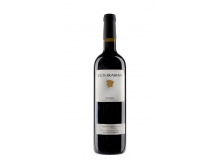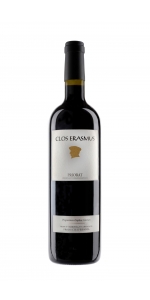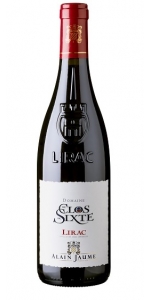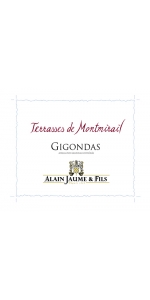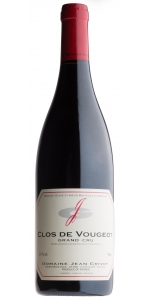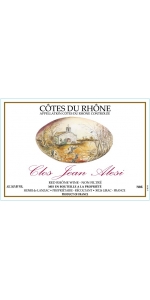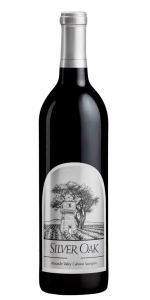Clos i Terrasses Clos Erasmus 2020
| Country: | Spain |
| Region: | Priorat |
| Winery: | Clos i Terrasses |
| Grape Types: | Grenache Syrah |
| Organic: | Yes |
| Vintage: | 2020 |
| Bottle Size: | 750 ml |
This wine is one of the absolute benchmarks for fine Priorat, and a reference in Spain. Sourced from 3 small vineyards in the Gratallops, this blend of Grenache and Syrah undergoes strict berry selection and is fermented and aged for 20 months in barrels and amphorae. It is all about dense fruit, exotic spice and licorella minerality, with a freshness and elegance are truly singular, even among the top wines of the appellation.
Review:
A complex bouquet that develops with a little time in the glass from fresh wild berry notes to floral and savoury-herbal nuances with violets and dried thyme. Extremely elegant on the palate, intense yet light-footed and vibrant, with fine-grained, perfect tannins and a long mineral, ethereal and savoury finish.
-Falstaff 100 Points
The 2021 Clos Erasmus is not a shy wine and comes in at 15% alcohol but with a pH of 3.3. The search here is for balance, as power comes as a given in Priorat. It was produced with 70% Garnacha and 30% Syrah, mostly from 40-year-old vines, except for a small plot of around 85-year-old vines. The vineyards are certified organic, and they've practiced biodynamics since 2004 but never got certification. The vinification is simple and the same as for Laurel: the bunches cooled down for 24 hours before being sorted and destemmed, then the grapes were put into the vat, where they warm up and start fermenting with the indigenous yeasts. It was pressed and put in barrels, 40% of them new, where it underwent malolactic and aged for 18 months. It feels like the most elegant and ethereal Erasmus ever despite the 15% alcohol on the label. It's very young and feels a bit shy, slightly developing notes of Mediterranean herbs, wild berries and flowers and is a little closed but very harmonious and insinuating. It's medium to full-bodied, with very fine and elegant but abundant tannins. It does feel lighter than previous vintages, possibly the effect of the cooler year. 3,400 bottles produced. It was bottled in May 2023.
-Robert Parker 99 Points
Alain Jaume Domaine du Clos de Sixte Lirac is made from 50% Grenache, 35% Syrah, 15% Mourvedre
An intense red garnet color. On the nose, aromas of red and black ripe fruit (kirsch and wild blackberry). The mouth is full, with aromas of blackcurrant liqueur and spice. Tannins are both harmonious and elegant thanks to the fleshiness of the wine. Hints of licorice and vanilla on the finish, which gives the wine length and complexity.
Soil type LIRAC vineyard is facing Chateauneuf du Pape, opposite side of the Rhône river. As showed by the picture and following geologist George Truc, soils are almost similar in both side. They are marked by the violence wrought by the Rhone river. It consists of a layer of marine molasses of the Miocene period covered by alpine alluvium. The presence of a great number of rounded stones known as "galets" in the earth is evidence of the time when the Rhone, then a torrent, tore fragments of rock from the Alps and deposited them on the plain. LIRAC is one of the up-coming best area from the southern Rhône valley, as it delivers outstanding wines. Winemaking & ageing Traditional wine-making in stainless still vats. Hand sorted bunches, crushed and destemmed grapes. Fermentation temperature : 30°C. 18 days of vatting with pigeages.
Alain Jaume Gigondas Terrasses de Montmirail is made from 65% Grenache the rest Syrah, Mourvèdre by less than 15%.
Deep red garnet color. Aromas of ripe and black fruits. On the palate the wine is rich, powerful and harmonious - well balanced with wild berry and pepper dominating.
Soil types
Located in and around the famous area called “Dentelles de Montmirail”, the landscape typicity is made by a rocky bar (between 100 and 600 meters high). Soils are made of clay and sand with limestone. The “Dentelles” appeared thanks to the pressure between the Pyrenees and Alps mountains. This is a land of predilection to produce both powerful and fresh wines. Nights are cooler and the grapes ripeness usually comes in late September.
Winemaking & aging
Traditional wine-making in stainless and concrete vats. Crushed and destemmed grapes. Average of 18 days of vatting with pigeages. Ageing in vats mostly and oak barrels. Bottling after 12 – 14 months.
Domaine Jean Grivot Clos de Vougeot Grand Cru is made from 100 percent Pinot Noir.
Domaine Jean Grivot is among the great names in Burgundian wine. Étienne Grivot and his wife Marielle took over from Étienne’s father Jean Grivot in 1987. The vineyards are densely planted and farmed organically “sans certification” while the aim in the cellar is for balance and clear expression of terroir.
Jean Grivot’s 38.3 acres spread across 22 appellations with vineyards in the communes of Vosne-Romanée, Vougeot, Chambolle-Musigny, and Nuits-Saint-Georges. Besides the three grand crus, there are 8 premier crus including the much lauded Les Beaux Monts and Suchots in Vosne-Romanée. The grapes are completely de-stemmed and fermentation is spontaneous.
About the Vineyard:
Clos de Vougeot grand cru was acquired by Étienne’s grandfather, Gaston Grivot, in 1919. The total holding is 4.6 acres from the middle of the vineyard to the lower wall and the average vine age is 40 years old. A good Clos de Vougeot should be a complete wine without any one feature standing out. It is a perfect balance of power, aroma, and flavor.
Wine Production:
The grapes are destemmed and maceration à froid usually lasts just a day or two. The alcoholic fermentation is spontaneous and malolactic fermentation occurs in barrel. Depending on the vintage, the proportion of new oak is around 40-70% percent for the grands crus.
Tasting Notes:
The wine shows aromas and flavors of red berries, herbs, and purple flowers. The palate is rich with ripe fruit and medium weight with bright acidity and fine tannins. Aging in 40-70% new Burgundian pièce brings notes of vanilla, toast, and baking spices.
Food Pairing:
Red Burgundy might be the world’s most flexible food wine. The wine’s high acidity, medium body, medium alcohol, and low tannins make it very food-friendly. Red Burgundy, with its earthy and sometimes gamey character, is a classic partner to roasted game birds, grilled duck breast, and dishes that feature mushrooms, black truffles, or are rich in umami.
Review:
This round version is packed with ripe black cherry, violet, graphite and tobacco flavors. The silky texture and vibrant acidity work in tandem, while refined tannins provide support without getting in the way. There are a few edges to be worked out, yet this is long and concentrated.
-Wine Spectator 95 Points
Segries Clos Jean Alesi Cotes du Rhone Rouge is made from 1/3 each of Grenache, Syrah and Mourvèdre.
This wine was originally called Segries Lanzac Clos Hermitage Cotes du Rhone Rouge
This 3.5 hectare vineyard, located in the famous “Quartier de la Chartreuse de Villeneuve-les-Avignon”, has been owned by the Formula 1 race car driver Jean Alesi since 1995. It is managed by Château de Ségriès.
This wine is a blend of 33% Grenache, 33% Syrah, and 33% Mourvedre sourced from 40-year-old vines. It was fermented in concrete vats then aged for nine months in 5% new oak barrels. The wine is a very grapey color in the glass. There is a light nose of tightly packed black fruit, dried herbs, pepper, and licorice. In the mouth there are tight-grained blue fruit, fine, powerful tannins, and a little strawberry flavor breaking loose. With air the wine reveals pencil and pepper flavors along with the structure for aging.
Yield: 40 hl/ha
Age of the vines: 40 years.
Vinification: 21 days skin maceration in temperature controlled concrete vats
Ageing: 9 months oak aging -5% new French oak from Seguin Moreau cooper and 95% of 1 year old barrels.
Delicious with roast meat, grilled vegetables, strong cheese and chocolate desserts.
Silver Oak Alexander Valley Cabernet Sauvignon is made from 95.2% Cabernet Sauvignon, 2.5% Cabernet Franc, 1.9% Merlot, 0.4% Petit Verdot
The Silver Oak Alexander Valley Cabernet Sauvignon 2019 has notes of red cherry, raspberry, blackberry, iris, vanilla and clove. Ruby in color, this elegant wine has great acidity and lift on the mid-palate. Black currant and warm baking spices linger with a deep and fruity finish. It will provide drinking pleasure through 2047 given proper cellaring.
Review:
Silver Oak's 2020 releases of Napa and Alexander Valley Cabernets are downright impressive. Tasted four years after the fires, in September of 2024 at the Alexander Valley winery, neither wine showed any sign of the hardened tannic structure or overwrought fruit often associated with the vintage. Instead, these wines remain true to Silver Oak’s signature style, with blackcurrant, fig, and plum fruits layered with white pepper, sweet cedar, and coriander spice. Medium-bodied, with sculpted tannins that persist through the lengthy finish, the Alexander Valley Cabernet in particular retains all the hallmarks of a balanced, inviting, and vibrant Silver Oak red.
-Decanter 94 Points
Truly gorgeous, fruity, velvety and enjoyable for a full-bodied cabernet. It is rich in blueberries, cherry cream, black cherries and raspberries on the palate, with very smooth, layered tannins and a soothing mouthfeel. So easy to drink now, but it will age well, too.
-James Suckling 94 Points
This wine is one of the absolute benchmarks for fine Priorat, and a reference in Spain. Sourced from 3 small vineyards in the Gratallops, this blend of Grenache and Syrah undergoes strict berry selection and is fermented and aged for 20 months in barrels and amphorae. It is all about dense fruit, exotic spice and licorella minerality, with a freshness and elegance are truly singular, even among the top wines of the appellation.
Review:
The still young and primary 2020 Clos Erasmus feels very floral and ethereal (within Priorat and Clos Erasmus); it's a fresher and lighter expression but without being weak. It's still a baby that needs to burn the baby fat (there are still some lactic notes from the malolactic in barrel). The wine is always around 3.2 or 3.3 pH and has some 15% to 15.5% alcohol, but the sensation this year is of a much fresher, more balanced and elegant wine. This should make an elegant bottle of mature Priorat with a decade in bottle, and I guess it will be long lived. Glorian mentioned that a small lot that normally goes to Laurel was added to the blend of Erasmus, resulting in a lot of added freshness and a note of orange blossom, which makes sense to me with the floral character of the wines and the extra freshness I perceived. This is really beautiful. It's a very special vintage of Erasmus that unfurls incredible complexity and tantalizing aromas with time in the glass—blood orange (talk about freshness!), curry and cassis. It has great purity, complexity, elegance and finesse... A very different Clos Erasmus. Bravo!
-Wine Advocate 100 Points
Folly takes many forms. Driven by whim, restlessness, or passion, it typically marks a pivot in one’s life that only the benefit of hindsight can judge. In 1988 Daphne Glorian spent her entire life’s savings on 17 terraces of vines situated in a wooded hollow just outside the village of Gratallops. Her accomplices in this folly? – René Barbier, Álvaro Palacios, Carles Pastrana, and Josep Lluís Pérez. Together they pooled their resources and newly-acquired vineyards, settling in a region rich in history but without a reputation for fine wines.
In 1989 the modern Priorat was born: one wine but five different labels, each of which would become known worldwide: Clos Mogador, Clos Dofi, Clos Martinet, Clos de l’Obac, and Clos Erasmus. Clos Erasmus is fittingly named after the famed humanist and Renaissance author Desiderius Erasmus, a favorite writer of Daphne and her humanist father, and in whose timeless work – In Praise of Folly – can Daphne’s hard work in the Priorat be fully understood.
Born in Paris but of Swiss-German ancestry, Daphne Glorian spent her early years shuttling between Switzerland and France before settling in Gratallops. “I like to make lists of what needs to be done each day, and in Spain, I’m happy if I manage a quarter of it,” is how Daphne explains her life now in Spain.
While studying law in Paris in her 20s, Daphne first discovered fine wine while working as the office manager for Kit Stevens MW. What was simply a job to make ends meet would soon become her advocation. Shortly after taking the job with Kit, she met René Barbier and Álvaro Palacios, who were both so passionate about a place called the Priorat that she decided she needed to visit and see it for herself.
The early years of making wine in the Priorat were not easy. The rugged landscape and poor soils yielded only small quantities of wine, and the region was unknown outside of Catalunya. From its start, Clos Erasmus has been a wine made from younger vines blessed with being planted in the right spot. Farming has always been sustainable, and with the addition of Ester Nin as Daphne’s viticulturist in 2004, Clos i Terrasses has been converted to biodynamic farming.
In her early vintages, Daphne relied on her friends René Barbier and Álvaro Palacios for advice, but guided by her instincts and her training in Burgundy, where she first discovered wine, her wines have evolved to become some of the most sought-after references for the Priorat – and along the way, some of the most desired wines in the world. Despite having received multiple 100-point scores from top critics, Daphne has kept Clos i Terrasses modest in size and has not dramatically increased her production of Clos Erasmus, preferring to create a second, equally expressive wine, Laurel.
Today Daphne’s property goes by the name Clos i Terrasses to recognize the Clos upon which her fame was established and the terraces that she currently farms. The original folly, Escales is a 1.7-hectare parcel planted originally on seventeen terraces carved out of a steep slope and surrounded by woods. North-facing, its seemingly inauspicious aspect creates the perfect conditions for the slow ripening of Garnatxa. The top-most seven terraces of Escales were regraded to costers in 2019 as the Syrah originally planted here began to die due to the heat. This new portion of Escales was subsequently regrafted to Garnatxa, making this site now 100% Garnatxa.
In the early 1990s, Daphne added Aubagues and Socarrats to her holdings. Aubagues was once partially terraced, but this section was regraded to costers and replanted with Garnatxa in 2013. Now totaling 2.5 hectares, Aubagues has a diverse range of exposures that span two ridge tops, with Garnatxa (56%) planted in the exposed, warmer parts of the vineyard and Syrah (44%) on the relatively more sheltered north-facing slopes.
Socarrats is 3.12 hectares and planted with Garnatxa (62%), her few remaining vines of Cabernet Sauvignon (28%), and Syrah (10%). This site runs up and over a hillside from southeast to northwest. Les Vaques is a north-facing part of Socarrats purchased in 1998, and where Daphne has an additional 1.4 hectares of Garnatxa planted in 2018 & 2019.
Guinarderes, acquired in 1998, is 2.9 hectares in size. Facing south and southeast, this is her warmest site and the first to be harvested. Guinarderes is planted with Garnatxa (60%) and Syrah (40%).
Purchased in 2011, Solanes is a steep 11-hectare plot situated at the foot of a dramatic sandstone butte in the village of El Lloar. In 2020 Daphne planted 1.72 hectares of Garnatxa on the south-facing portion, while the corresponding northeast-facing slope would be ideal for Syrah in the future. Despite its size, 2 hectares are already planted with olive trees – the source for her olive oil – leaving only about 4.3 hectares suitable for future planting.
Together these vineyards form Clos i Terrasses. A modest-sized estate by the standards of the modern Priorat, Daphne strives to preserve the ideals that led her to her original folly – the unique and distinct character of Clos Erasmus made possible through a strict selection of sites, fruit, and the barrels in which this nascent wine is aged – as well as the creation of a separate cuvée, Laurel which has its own unique personality and terroir expression.
- back
All older vintage wines have been purchased from a single collectors cellar. Pictures can be requested before shipment.
Turley Kirschenmann Vineyard Zinfandel is made from 100 percent Zinfandel.
Organically farmed, own-rooted, head-trained and dry-farmed vines planted in 1915 in the silica-rich sandy soils of the east side of the Mokelumne River AVA. Marking the 10th vintage of this wine, bright ripe red fruits, raspberry preserves, and white pepper burst forth from the glass. Precise on the palate like a perfectly seasoned piece of meat, with more red berries and a sumptuously complex texture.
Review:
The 2023 Zinfandel Kirschenmann Vineyard is one of the best wines I have tasted from this site, as it has more textural depth and resonance than is typically the case. As always, the Kirschenmann Zinfandel is aromatic and lifted. In 2023, it is a bit more complex and nuanced than it often is. Bright red-toned fruit and floral overtones linger. This is such a pretty wine.
Vinous 92-94 Points

